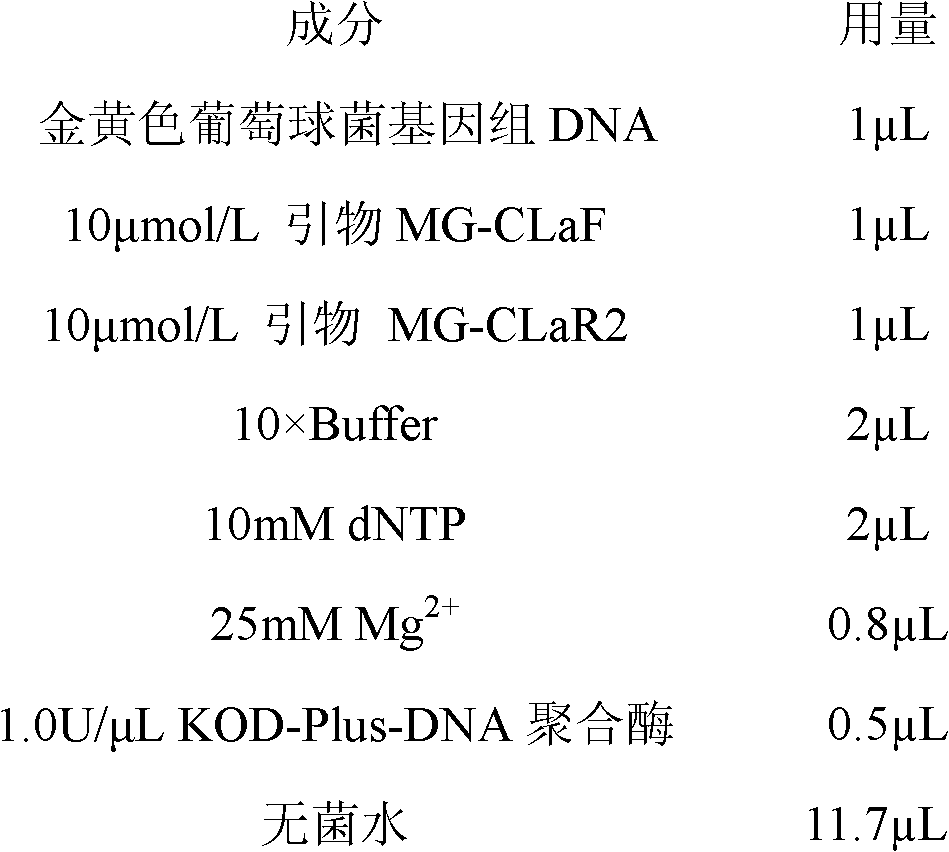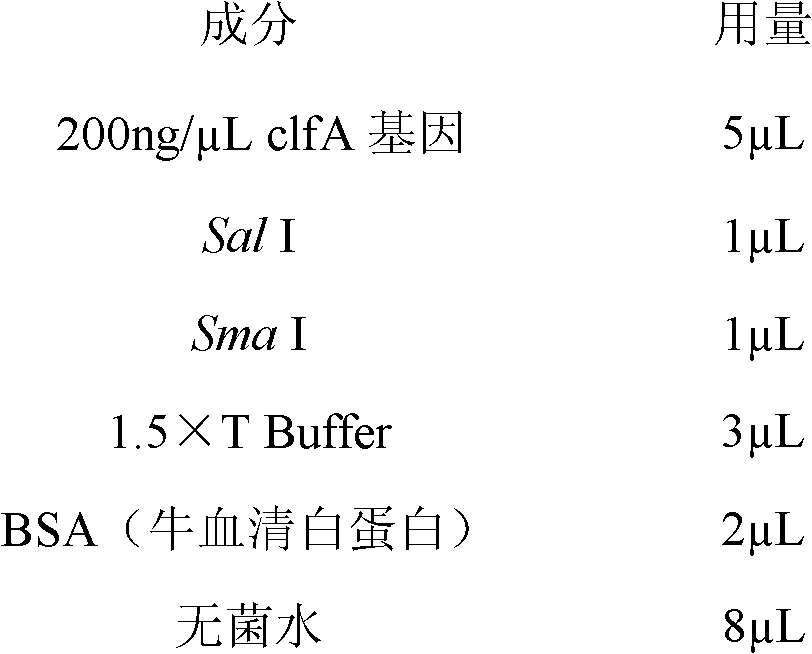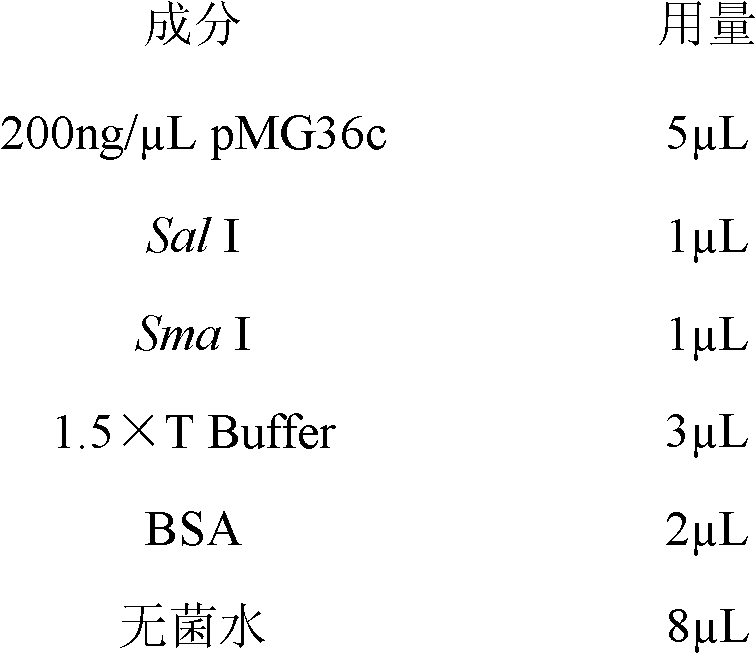Building method of lactococcus lactis genetic engineering bacterial strain loaded with clfA gene
A technology of genetically engineered strains, Lactococcus lactis, applied in the field of construction of Lactococcus lactis genetically engineered strains, can solve the problems of restriction, vaccine invasiveness, toxicity, etc.
- Summary
- Abstract
- Description
- Claims
- Application Information
AI Technical Summary
Problems solved by technology
Method used
Image
Examples
specific Embodiment approach 1
[0011] Specific embodiment one: the construction method of the Lactococcus lactis genetically engineered bacterial strain that introduces clfA gene in this embodiment, carry out according to the following steps: 1, extract the genomic DNA of Staphylococcus aureus; 2, take Staphylococcus aureus genomic DNA as template, MG-CLaF and MG-CLaR2 were used as primers to perform PCR amplification; 3. The PCR amplification product was detected by 1% agarose gel electrophoresis, and then purified using a gel recovery kit to obtain the clfA gene; 4. The clfA gene was obtained by using a plasmid The extraction kit extracts the plasmid pMG36c stored in Escherichia coli JM109; 5. Carry out double digestion of the clfA gene and the plasmid pMG36c respectively, and connect the digested clfA gene and the plasmid pMG36c with a ligation kit to obtain a ligation product; 6. 1. Transform the ligation product into Escherichia coli JM109 competent cells, use chloramphenicol to screen the transformants...
specific Embodiment approach 2
[0045] Embodiment 2: The difference between this embodiment and Embodiment 1 is that the reaction system of PCR amplification in step 2 is a 20 μL reaction system, which consists of the following components:
[0046]
[0047] PCR amplification conditions were: denaturation at 94°C for 2 min, denaturation at 94°C for 15 s, annealing at 58°C for 30 s, extension at 68°C for 90 s, a total of 35 cycles, extension at 68°C for 5 min, and incubation at 4°C. Others are the same as in the first embodiment.
specific Embodiment approach 3
[0048] Specific embodiment three: the difference between this embodiment and specific embodiment one is: the system of clfA gene double-enzyme digestion in step five is as follows:
[0049]
[0050] Enzyme digestion reaction conditions: 37°C water bath, 1h. Others are the same as in the first embodiment.
PUM
 Login to View More
Login to View More Abstract
Description
Claims
Application Information
 Login to View More
Login to View More - R&D
- Intellectual Property
- Life Sciences
- Materials
- Tech Scout
- Unparalleled Data Quality
- Higher Quality Content
- 60% Fewer Hallucinations
Browse by: Latest US Patents, China's latest patents, Technical Efficacy Thesaurus, Application Domain, Technology Topic, Popular Technical Reports.
© 2025 PatSnap. All rights reserved.Legal|Privacy policy|Modern Slavery Act Transparency Statement|Sitemap|About US| Contact US: help@patsnap.com



